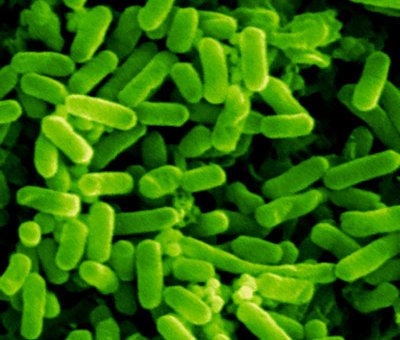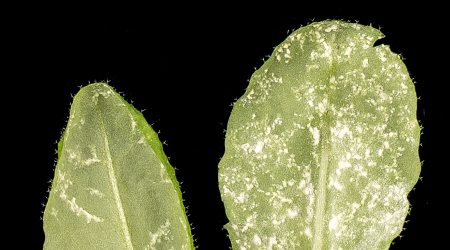New insights into bacterial toxin will help search for antibiotics

A study into a common bacterial toxin found in the human gut has yielded valuable information that could assist in the development of new antibiotics.
Researchers at the John Innes Centre working alongside colleagues in Moscow and Poland have made the findings in a study looking at the machinery that synthesises the toxin Microcin B17.
The research looked at how the microcin synthase (McbBCD) carries out the chemical reactions that lead to the production of the mature toxin Microcin B17.
The toxin is an antimicrobial compound produced by E.coli bacteria to kill off other bacteria in the gut.
It is currently not clear how the compound is made and understanding the processes that catalyse it will assist researchers in developing novel toxins with potential as new antibiotics.
In the paper, which appears today in the journal Molecular Cell, the team studied the biosynthetic machinery that makes microcin, using x-ray crystallography.
The research delivered the unexpected finding that the synthase is an octameric complex (B4C2D2) which the team were able to co-crystallise with its product microcin B17.
“The arrangement of the subunits has given us important clues about how the toxin is made,” says Professor Tony Maxwell a co-author of the study from the John Innes Centre. “This sort of understanding will help in the design and development of future antibiotics.”
Dr David Lawson, another co-author from the John Innes Centre, added, “this work has shown how the application of x-ray crystallography can shed new light on biological processes and can have a potential impact on real-world problems.”
Antimicrobial resistance (AMR) is one of the most serious threats facing humanity and has added urgency to the search for new antibiotics.
A potentially valuable resource are bacteria that make antimicrobial compounds that kill other bacteria. Researchers can isolate such compounds to determine whether they can be used or adapted to become clinically-useful antibiotics.
The article appears today in the journal Molecular Cell: ‘Architecture of Microcin B17 Synthetase: An Octameric Protein Complex Converting a Ribosomally Synthesized Peptide into a DNA Gyrase Poison‘.
The research was funded by the National Science Centre, Poland, EU (Horizon 2020), The Royal Society and BBSRC.


